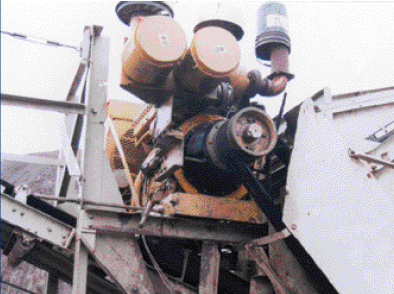

| Topic: Worker Fatally Injured in Rock Crusher Explosion | |
| Date Issued: February 1, 2004 | Date Revised: |
The WorkSafeNB investigation determined the crusher had been properly lubricated, with operational repairs made as required. However, maintenance records were not documented, nor was there a maintenance schedule.
The drive assembly typically requires 12 to 18 belts on the drive spool. For this, the supplier recommends belts for each position. Operators typically wait until it is necessary to replace an entire set of belts. To compensate for having fewer drive belts, operators must increase the tension on the remaining belts. This results in a condition known as “side loading.” This condition increases the load on the clutch assembly, potentially causing the seal to leak and create excessive wear on the clutch, leading to overheating. Should the bearing lose lubrication fully, the result is an explosive disintegration of the transmission.

Reprinted April 2015